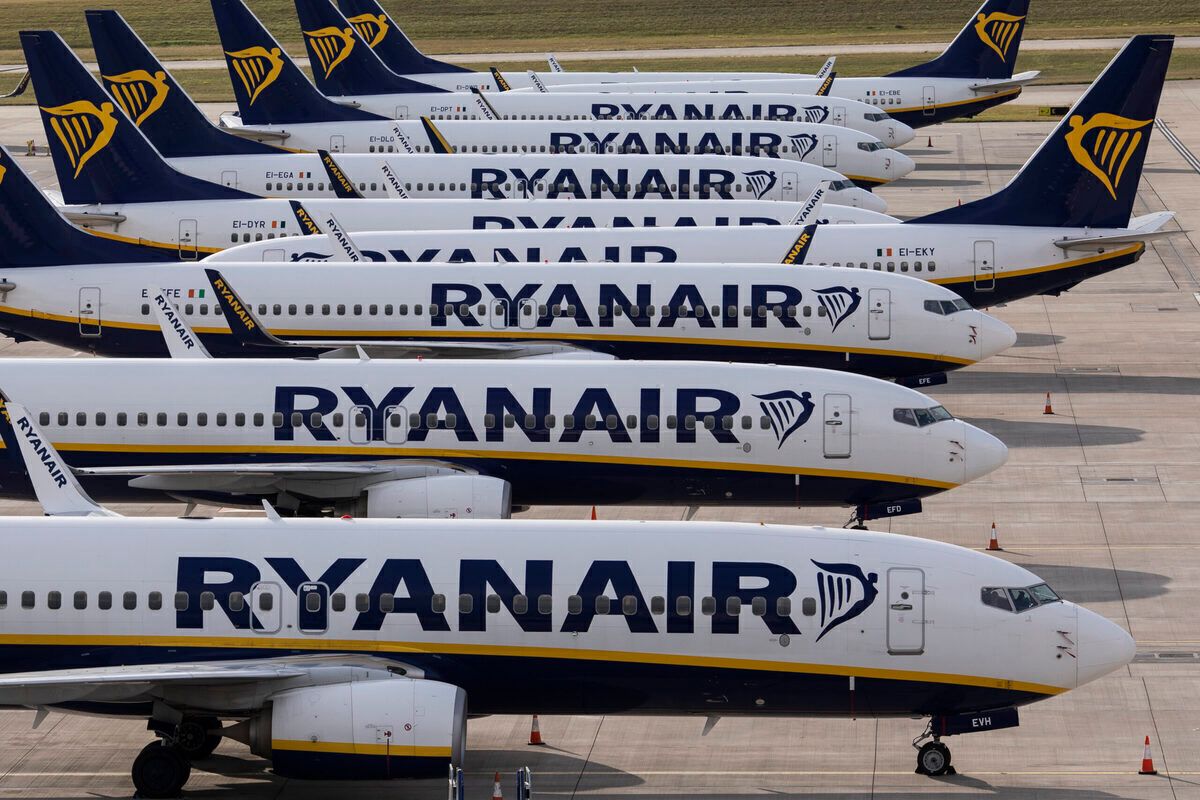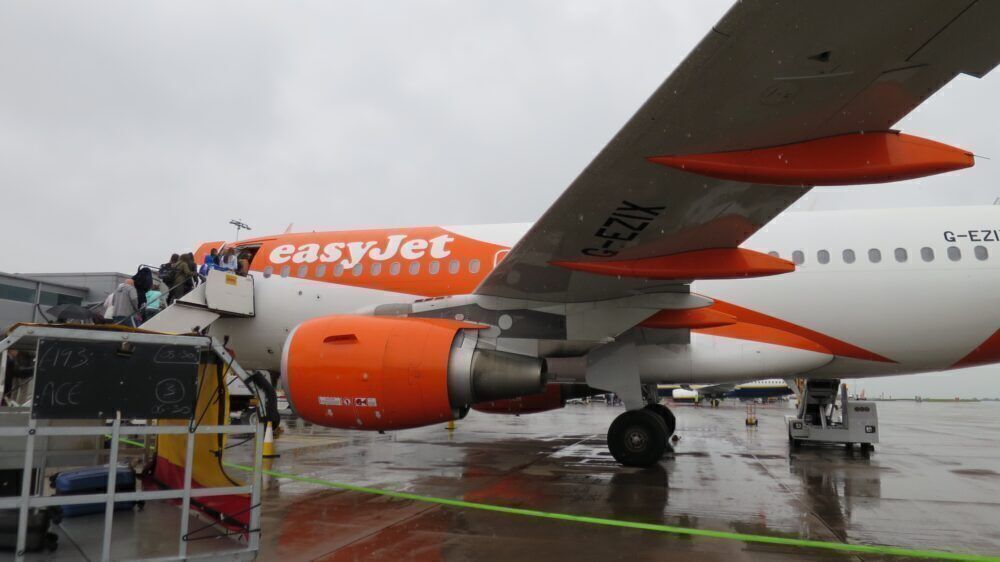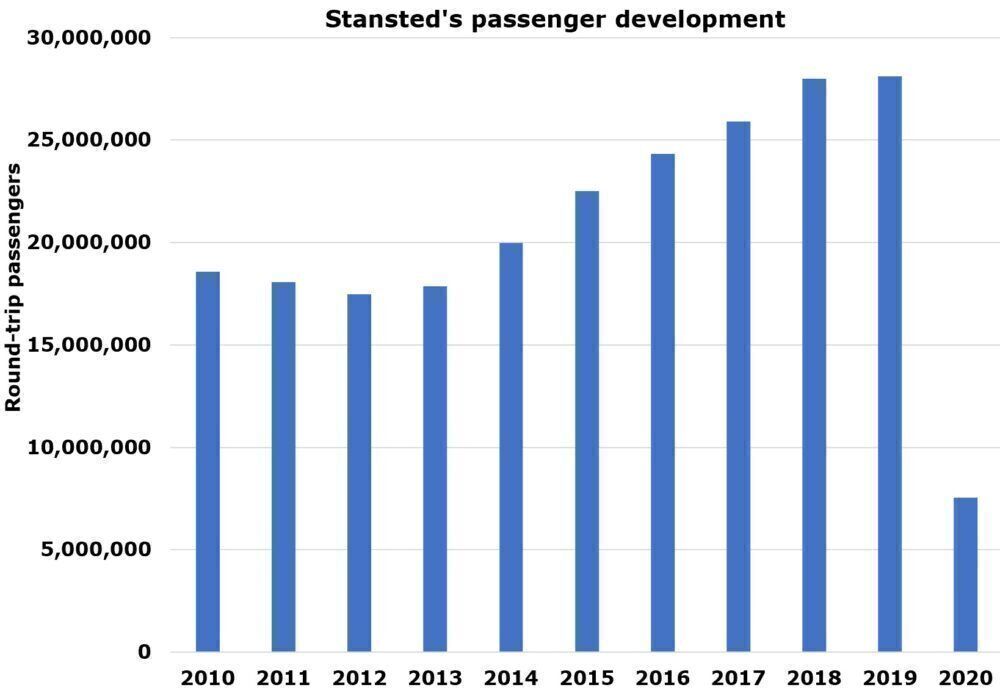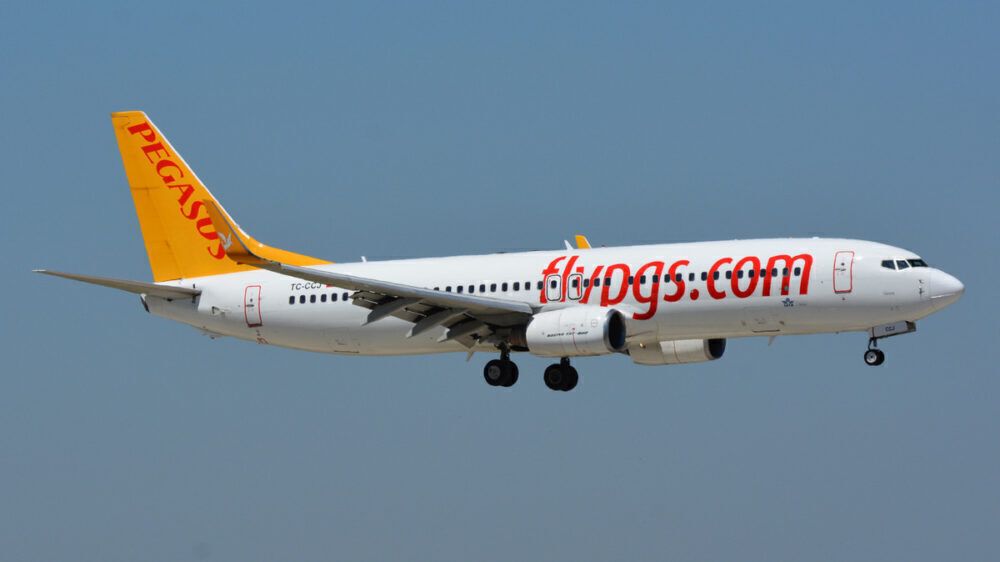London Stansted has been given planning permission to increase passenger numbers to 43 million a year, up from the current limit of 35 million. Crucial in this is the number of aircraft movements, which remains unchanged at 274,000. In 2019, Stansted had 28.1 million passengers. While coronavirus has badly affected the airport, this approval will help to future-proof the airport.
This approval to grow to 43 million passengers also enables the airport to add nine extra aircraft stands (three contact and six remote), together with two additional taxiway links to the single runway. The panel of three inspectors said:
"Whilst there would be a limited degree of harm arising in respect of air quality and carbon emissions, these matters are far outweighed by the benefits of the proposal.
Securing planning permission now would bring benefits associated with providing airline operators, as well as other prospective investors, with significantly greater certainty regarding their ability to grow at Stansted, secure long-term growth deals, and expand route networks, potentially including long-haul routes."
Stay informed: Sign up for our daily and weekly aviation news digests.
A long time coming
Stansted applied to increase the number of passengers in 2017, with this approved the following year. However, it was overturned in January 2020, resulting in an appeal, which has now been rejected – four years after the project was first mooted.
Key in permission being granted surrounds the maximum number of aircraft movements, which remains capped at 274,000 a year. This means that the extra eight million passengers will be achieved by remaining within the aircraft movement limit.
200,000 movements in 2019
In 2019, Stansted had 200,000 movements, the UK CAA shows, up from 169,000 in 2015. This is an increase of 18%. However, in this period passenger numbers rose by 25%. This means that aircraft up-gauging and more passengers per movement were more important than extra movements.
Ryanair is now in talks with Boeing for 100+ 230-seat MAX 10s. If these materialize, a good number will inevitably be based at Stansted, by far the carrier's leading airport. The importance of up-gauging and more passengers per movement would then continue, along with additional movements.
Stansted had 28.1 million passengers in 2019
When increasing the passenger cap was mentioned in 2017, Stansted had expected to reach its 35 million limit by 2022/2023. Coronavirus has obviously put paid to that, with the airport achieving 7.5 million passengers in 2020, down from 28.1 million the year before. That said, Air India launched Mumbai in 2020, while El Al began from Tel Aviv.
While the 43 million limit is obviously not needed based on passengers in 2020, it will help to future-proof the airport when things return to normal, which it absolutely will. It will also help London as a whole, while enabling Stansted to become the UK's third-largest airport, behind Heathrow and Gatwick. The planning inspectors said:
"If it ultimately takes the airport longer than expected to reach anticipated levels of growth, then the corresponding environmental effects would also take longer to materialize or may reduce due to advances in technology that might occur in the meantime."
Top-20 routes in 2020
While 2020 was an exceptional year, it is intriguing to look at the most popular routes, with the top-20 shown below, based on CAA data. Istanbul Sabiha Gökçen was number-one, up from eighth the year before.
The route to Sabiha Gökçen also included those who transited over the airport, which is on the Asia side of Istanbul. Sabiha Gökçen had up to 50 weekly departures from Stansted, helped by the arrival of Turkish Airlines competing with Pegasus. However, it was down from nearly 473,000 passengers in 2019.
- Istanbul Sabiha Gökçen: 291,148 round-trip passengers
- Dublin: 257,548
- Lisbon: 178,049
- Belfast International: 156,697
- Rome Ciampino): 155,550
- Berlin Brandenburg: 139,325
- Barcelona: 138,523
- Madrid: 131,922
- Sofia: 125,347
- Milan Bergamo: 125,102
- Budapest: 124,845
- Warsaw Modlin: 123,882
- Krakow: 120,518
- Porto: 118,645
- Prague: 108,097
- Malaga: 108,069
- Copenhagen: 106,755
- Tenerife South: 105,751
- Bucharest: 103,620
- Edinburgh: 100,176
In 21st position was Dubai, with 97,289 passengers, including those who connected beyond Dubai. Emirates began Stansted in 2018. At the time of writing, this route is due to resume from November 1st on a once-daily basis using B777-300ERs.
What are your views about the 43 million passenger limit? Let us know in the comments.






